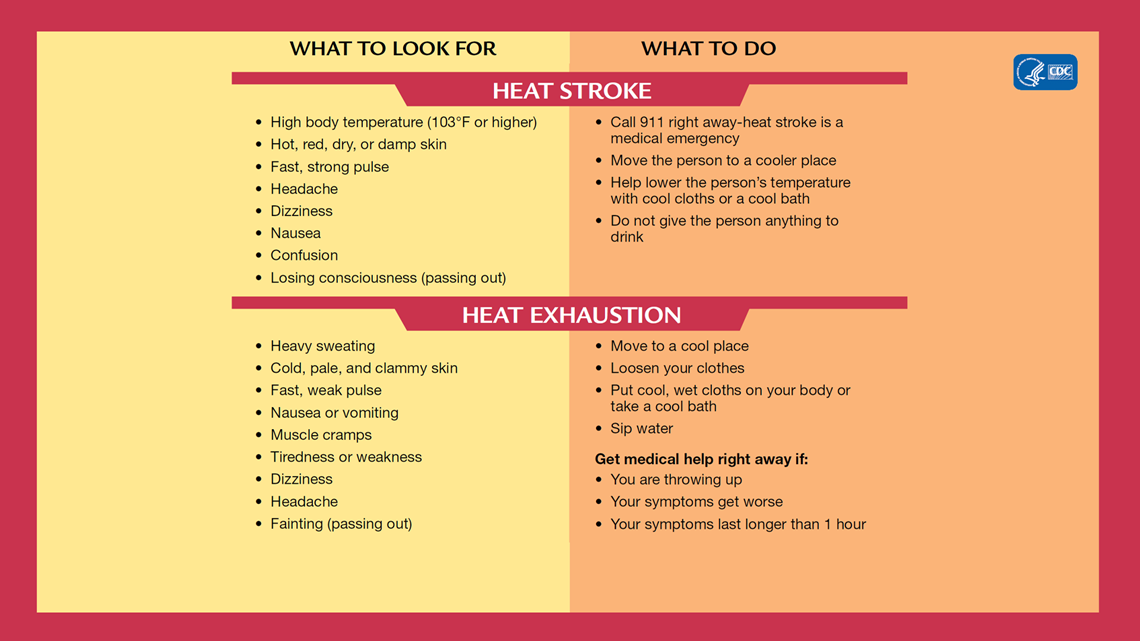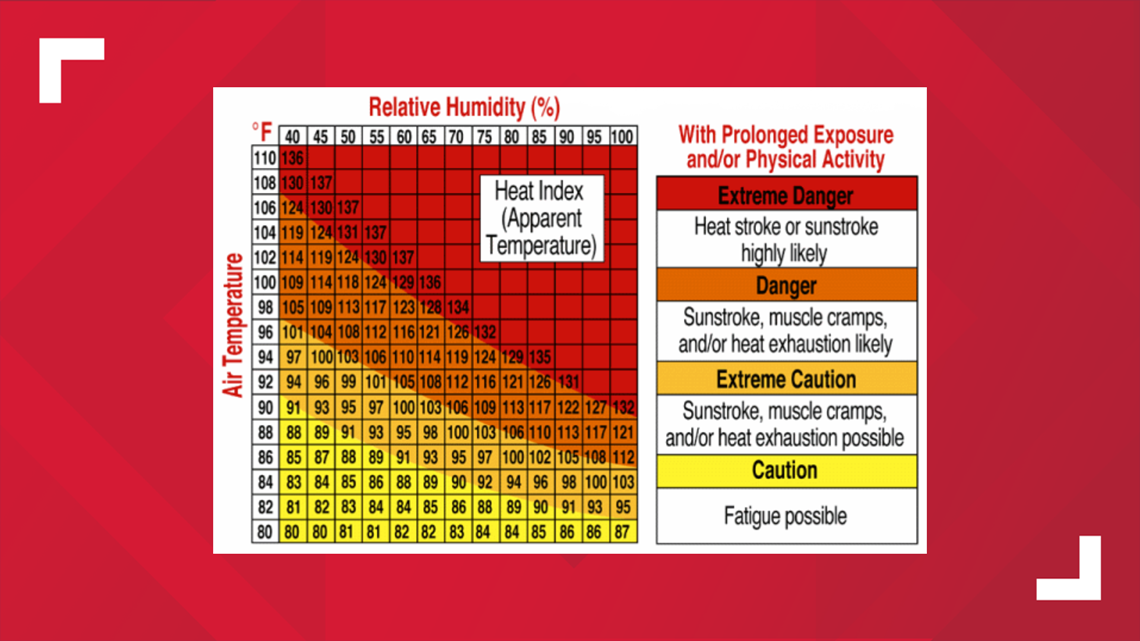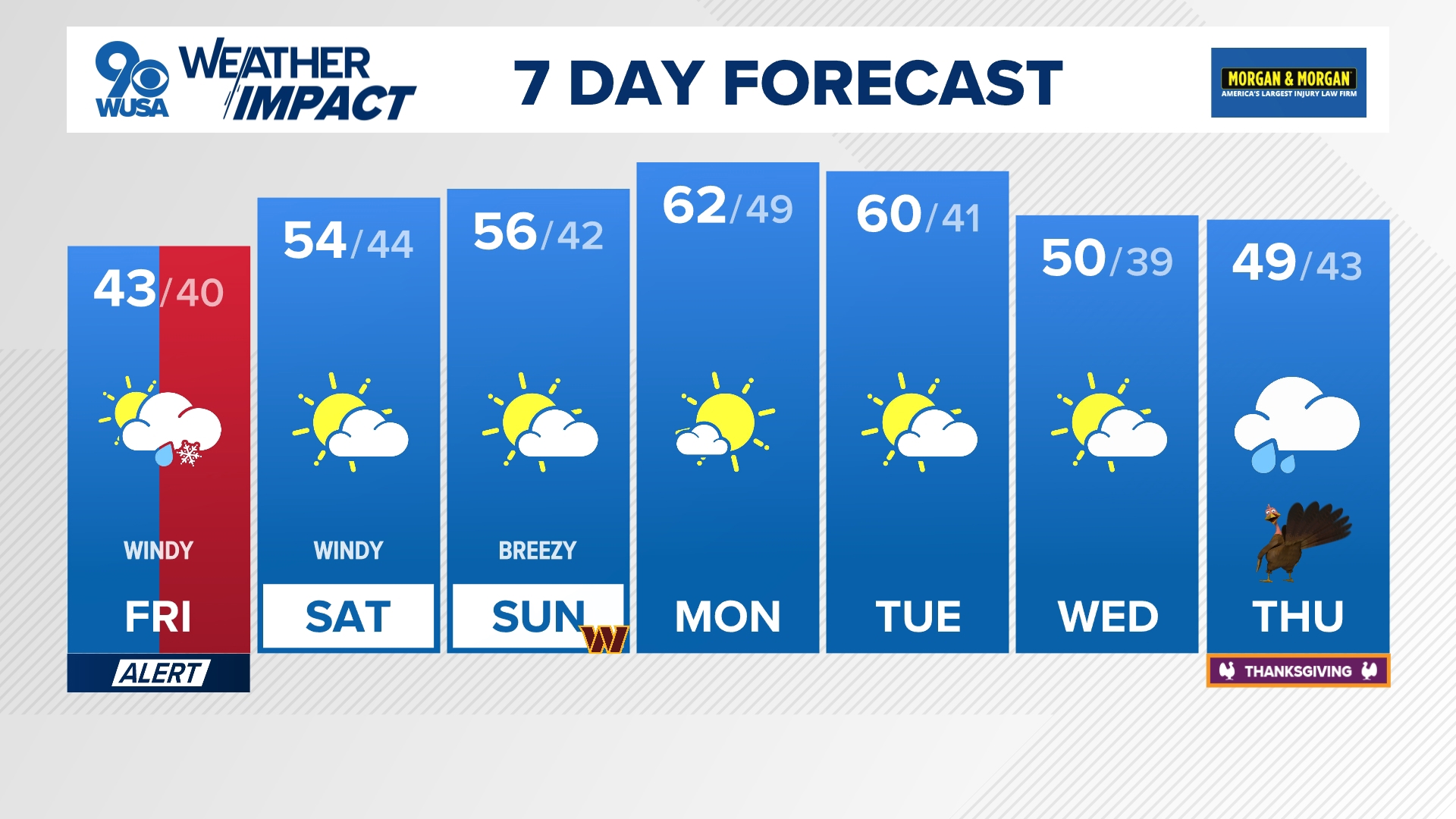WASHINGTON — The heat index is a common term thrown around in the summer, especially during heatwaves. According to the National Oceanic and Atmospheric Administration (NOAA), the heat index is “is a measure of how hot it really feels when relative humidity is factored in with the actual air temperature.”
In basic terms, the heat index is what the temperature feels like thanks to the moisture in the air. That moisture makes it harder for your body to cool down because your sweat, a natural cooling mechanism, can’t evaporate as readily in the muggy air.
So how is the heat index calculated? Meteorologists use an equation based on temperature and relative humidity.
For example, if the air temperature is 90 degrees and the humidity is 50%, the heat index or “feels like” temperature will be 95 degrees.
At the same air temperature of 90 degrees and relative humidity of 70%, the heat index is 105 degrees.
When you see a heat index forecast or value, you can judge how dangerous the heat is based on this number.


When the heat index exceeds 80 degrees, fatigue is possible. When the heat index exceeds 90 degrees, heat stroke or heat exhaustion is possible. A heat index of 103 degrees or hotter means heat exhaustion is likely, heat stroke is possible. Finally, a heat index of 125 degrees or hotter is extremely dangerous, with heat stroke likely.


NOAA has a chart and a useful heat index calculator to breaks down heat index values based on either relative humidity or dew point.



